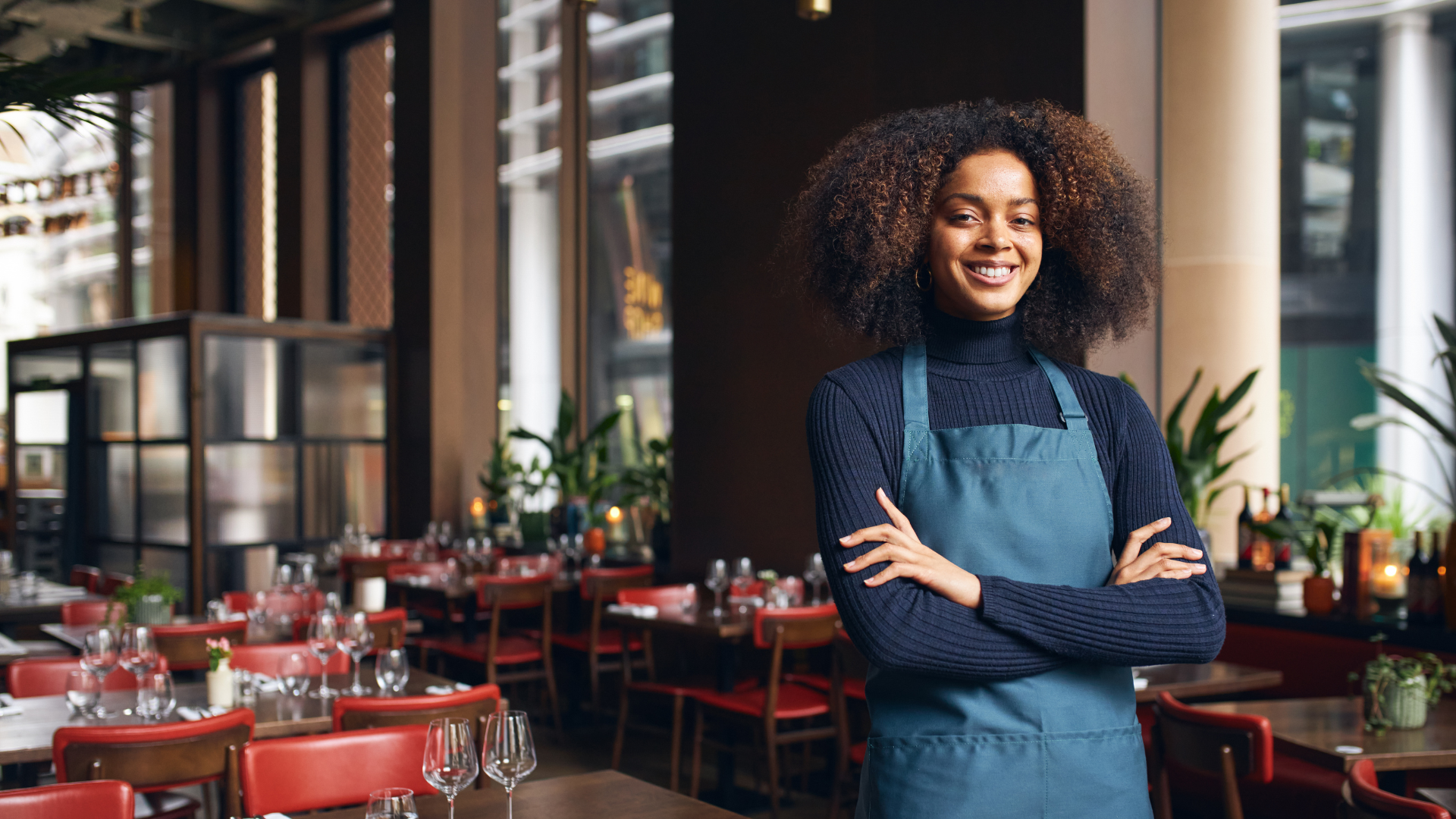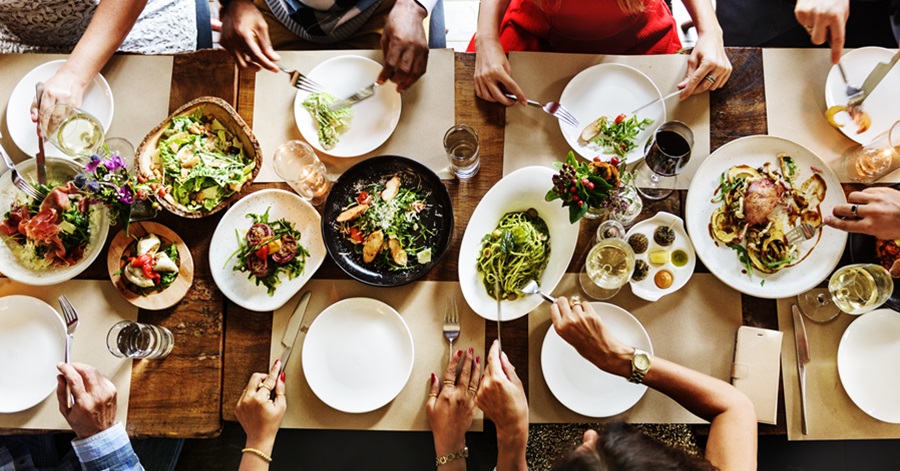A strong restaurant brand is the key ingredient to standing out in the highly competitive hospitality industry.
It can help to build customer loyalty and keep diners coming back for more. It allows your restaurant to establish differences with your competitors and leave a memorable impression on your audience.
From the moment a guest searches for you online to their first bite of food, every touchpoint needs to be part of your brand. That’s why we've created this guide for restaurant owners to create a restaurant brand that will attract more reservations to your venue.
What is restaurant branding?
Restaurant branding refers to your restaurant’s unique identity and the way you express and showcase it! Great branding encompasses every element of your restaurant, including your:
- Logo
- Colour palette
- Interior design
- The tone of your social media posts
- Customer experience when they visit your venue

Why is restaurant branding important?
Restaurant branding is essential as it shapes the way your business is perceived by existing and prospective customers.
In an industry where first impressions can make or break relationships with a customer, a strong brand effectively communicates your venue’s values, offerings, and personality.
A well-executed brand sets you apart from competitors by highlighting what makes your restaurant unique. If your restaurant focuses on authentic Mexican cuisine, and you effectively incorporate this into your branding, customers will be even more delighted when your brand is reinforced in their dining experience.
Branding transforms your restaurant from just another place to eat into a location people choose and remember. This helps attract more customers to your venue and can help improve your word-of-mouth marketing.
7 ways to create an unforgettable restaurant brand
Building an unforgettable restaurant brand goes way beyond a logo or a clever tagline. It’s about creating a complete, end-to-end experience that sticks with your customers.
Here are seven practical steps to help you craft a brand that truly stands out:
1. Understand the market
Market research provides the foundation for your branding strategy. It helps you determine how to position your business and appeal to your target audience.
Key areas of focus include:
- Demographics
- The local area
- Competitor analysis
Start by identifying the demographics of your potential customers.
Are you catering to families, young professionals, retirees, or all of the above? Understanding their preferences will help you develop a brand that resonates with them.
Next, analyse your local area. Are you in a busy city centre, a suburban neighbourhood, or a tourist hotspot? Your brand should align with what makes your location unique and what customers will expect to find there.
Conduct a competitor analysis to see how other restaurants in your area are positioning themselves. Look at their menu offerings, branding, pricing, and customer reviews. This will help you identify gaps to leverage and avoid overcrowded niches.
For established restaurants, tools like Acteol can provide valuable insights into your existing customer base. Acteol is a customer relationship management (CRM) system that helps you analyse information about your customer and create profiles you can use to understand them better.
When integrated with the ResDiary table management software, it incorporates booking data for even more powerful profiles.
With this strong understanding of your customers, you’ll be able to develop a brand that hits the right note that appeals to them. For example, families may want a brand that highlights community engagement. Meanwhile, patrons in their early twenties may be more attracted to a brand that appears to be on-trend.
2. Create a mission statement
Crafting a mission statement is a key step in developing your brand identity. It helps to define every other element of your branding. It establishes the "why" behind your restaurant, helping you communicate what makes you unique and why customers should dine with you.
For example, are you committed to sustainable practices, prioritising locally-sourced ingredients, or providing a family-friendly atmosphere?
A clear mission statement ensures that these values are central to all your branding efforts.
Ask yourself:
- Who are you serving? Define your target audience and their needs.
- What are you offering? Highlight your core values, like quality, innovation, or community. Link them back to your target audience.
- Why does it matter? Emphasise the deeper significance of your restaurant’s existence, such as creating more sustainable food practices to bring different cultures together.
![]()
3. Create a visual brand identity
From your logo to your colour palette and design elements, every visual component of your restaurant should work together cohesively. They should communicate the key aspects of your restaurant and what sets your venue apart.
Your visual branding goes way beyond what looks good. The visuals associated with your restaurant should be closely tied to your unique selling points (USPs) as well as your market research.
If your USP is locally-sourced, organic dishes, your brand visuals might feature earthy tones and natural imagery that reflects sustainability. (If this sounds like you, why not read our blog on 7 Ways to Make Your Restaurant More Sustainable and Eco-Friendly?)
If your market research reveals that your target audience values upscale dining experiences, your visuals might include elegant fonts and highly refined design elements.
This ensures that your customers are constantly thinking about what makes your restaurant unique and why it appeals to them.
When you think of any brand’s visual identity, the first thing that comes to mind is usually its logo. A great logo should be fairly simple, versatile, and instantly recognisable. It should also strongly reflect the essence of your brand. Colours play an important role in any logo, as they help to evoke your restaurant’s tone.
Greens and browns might suggest freshness and sustainability, while bright neon colours may suggest a modern, trendy venue. If your own design skills aren’t the best, consider collaborating with an expert to create the perfect logo for your business.
4. Incorporate your restaurant's design
Your restaurant’s physical space should also reflect your branding. Everything from your furniture to your lighting plays a role in how your venue is perceived.
For example, a casual café targeting a younger demographic might use bright, bold colours, and minimalist furniture to create a vibrant and modern atmosphere.
By contrast, a fine-dining restaurant could opt for more upscale furniture, lighting and decor to convey sophistication and exclusivity.
![]()
Some powerful ways to include your brand identity in your restaurant design include:
- Subtly feature your logo throughout the venue, such as on signage, menus, and coasters.
- Use your brand colours throughout the space, from wall paint to table settings to decor. Consistency in colour helps reinforce brand recognition.
- Choose lighting that matches the mood of your brand. Soft, dim lighting is often used to create a more intimate atmosphere for fine dining. Bright, natural light can be used to contribute to a more welcoming, casual vibe you might expect in a family restaurant.
- Align the style of your furniture and decorations with your brand’s personality. For example, if your restaurant prioritises farm-to-table dishes, you can use rustic wood with vintage accents.
5. Brand your online presence
Your restaurant's online presence should feel like an extension of your physical location. It’s critically important because it is often the first point of interaction with potential customers, or where your restaurant advertising has directed them to for deeper engagement.
Consistently reinforcing your brand across digital platforms ensures that your restaurant stands out and attracts new diners. Here are some of the most important channels to consider when it comes to your online presence.
Restaurant website
Your restaurant’s website is often the first port of call for potential diners. As such, it should immediately communicate your brand identity.
Everything from the design to the tone of your written content should align with your restaurant's personality. Use your logo, colour palette, and high-quality imagery to create the right visual experience.
ResDiary helps your business maintain your branding on your website with fully customisable booking widgets. The widgets can fit seamlessly onto your website, maintaining your branding and providing a super convenient way for diners to place reservations.
For more information on incorporating your restaurant into your website, check out our complete guide to restaurant website design.
Social media
Use social media platforms to share content with visual appeal, such as photos of your dishes, behind-the-scenes stories, and updates about events or promotions. Your social media presence should be designed to speak directly to your target audiences and effectively incorporate your branding.
With modern social media analytics, you can analyse the demographic data of your followers and find the content they find most engaging.
ResDiary’s integration with Meta simplifies the reservation process by allowing customers to place bookings directly through your social media pages. This makes it far easier to convert your followers into diners.
Google Business Profile
A Google Business Profile provides vital information, like your address, phone number, and customer reviews, directly within Google Search and Maps. You can incorporate your restaurant branding through photos and community posts.
You can also use ResDiary’s Reserve with Google integration to more effectively capture bookings from this platform. Customers can place a booking directly through your Maps profile, as well as through Google Search.
6. Brand your marketing
Marketing is critical for attracting more customers to your restaurant. It’s also the perfect way to continue reinforcing your brand identity.
One of the best ways you can use marketing to highlight your brand identity is with emails. ResDiary’s branded email templates are fully customisable. You can configure them to use the right tone of language for your venue, as well as incorporate your restaurant’s visual branding.
ResDiary offers templates including booking confirmations, reminders, post-dining thank-you emails, and feedback requests. Through every step of the dining journey, you can show off all the hard work you’ve put into your restaurant branding.
In combination with ResDiary’s booking widgets, you can use ResDiary as a true marketing solution to effectively incorporate your branding into just about everything your customers see.
You can also use marketing integrations like the Acteol CRM system and Silverstreet for SMS marketing. These systems offer deep insights and automated tools to help elevate your marketing.
7. Keep it consistent
Consistency in restaurant branding ties all your efforts together. It ensures that your customers continually interact with your brand in a seamless way.
When your brand is consistently represented across every channel, it builds trust and reinforces the story you’re telling about your restaurant.
Your website, social media, and email communications should all reflect the same tone, style, and visual elements. Your brand should be identifiable in the decor, menu design, and even the music in your venue.
If you decide to update your brand identity, such as your logo or messaging, it’s important to roll out these updates carefully.
A piece-by-piece approach can confuse customers and waste the hard work you’ve put in. Instead, implement changes across all channels as simultaneously as you can. This ensures a smooth transition that keeps your identity intact.
From the way customers book a table online to the moment they step through your doors, your brand should create a consistent and enjoyable experience.
Establish your restaurant's brand with ResDiary
ResDiary is the perfect tool to help establish your venue’s brand. From customisable booking widgets on your website to email templates, ResDiary offers a comprehensive solution to your marketing.
ResDiary also integrates with a broad range of marketing tools. With a centralised approach to your marketing, keeping your branding consistent is made easy.
When you use ResDiary, you can carefully gather important insights and feedback from your customers through booking data and post-dining surveys. This can all go into helping develop your brand.
Ready to take your venue to the next level? Book a demo with ResDiary today.





